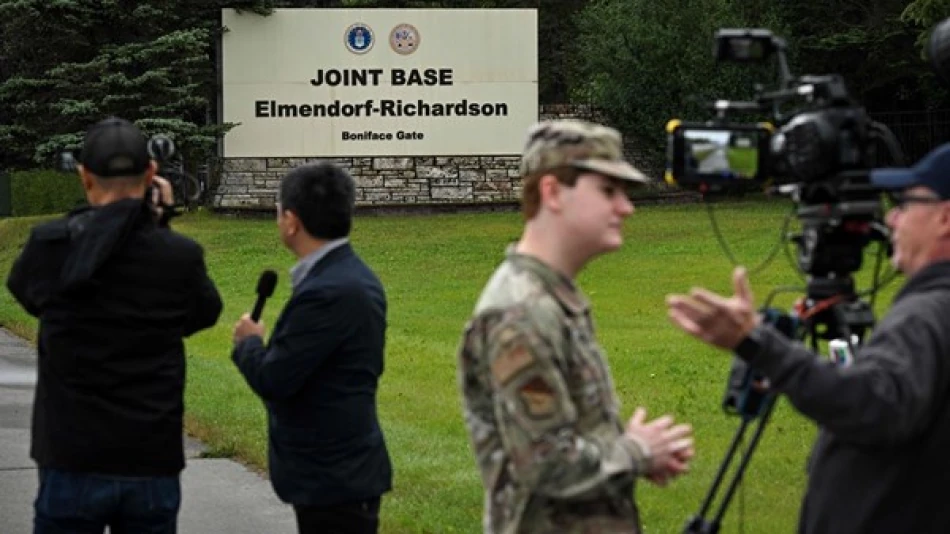
Putin and Trump's Highly Anticipated Summit: Insights into the Anticipated Duration
Trump-Putin Summit in Alaska Signals Major Diplomatic Push on Ukraine Crisis
Russian President Vladimir Putin and U.S. President Donald Trump are set to hold an extended summit at Alaska's Elmendorf Richardson Air Base, with the Kremlin estimating the meeting will last at least six to seven hours as both leaders attempt to navigate the ongoing Ukraine crisis. The marathon diplomatic session, featuring one-on-one talks followed by expanded negotiations and a joint press conference, represents one of the most significant direct engagements between the superpowers since the conflict began.
High-Stakes Diplomacy Returns to Neutral Ground
Kremlin spokesperson Dmitry Peskov confirmed the extensive timeline for Friday's summit, telling Russian state television that the duration reflects the complexity of issues on the table. "Generally speaking, we can expect this will take at least six or seven hours," Peskov stated, outlining a structured approach beginning with a personal meeting between the leaders before expanding to include their respective delegations.
The choice of Alaska as the meeting venue carries symbolic weight, echoing Cold War-era summit diplomacy when neutral or strategically positioned locations facilitated superpower negotiations. Trump will personally greet Putin upon his arrival at 11:00 AM local time (7:00 PM GMT), according to the Kremlin spokesman, signaling the diplomatic importance both sides are placing on the encounter.
Ukraine Crisis Dominates Agenda
The extended format suggests both leaders recognize the need for substantive discussions rather than symbolic photo opportunities. The planned structure—moving from private talks to delegation-level negotiations before public statements—mirrors successful diplomatic frameworks used in previous conflict resolution efforts.
Strategic Implications for Global Markets
Financial markets will be closely monitoring outcomes from this summit, as any breakthrough on Ukraine could significantly impact energy prices, defense spending, and broader geopolitical risk assessments. The extended timeline suggests both leaders are prepared for detailed negotiations rather than preliminary discussions, potentially indicating readiness for concrete proposals.
Diplomatic Precedents and Expectations
The six-to-seven-hour timeframe places this meeting among the longer bilateral summits in recent diplomatic history. Such extended engagements typically occur when leaders believe substantial progress is possible, as shorter meetings are generally reserved for relationship maintenance or preliminary discussions.
The inclusion of a joint press conference in the schedule indicates both sides expect to have something concrete to announce, whether breakthrough agreements or at minimum a framework for continued negotiations. This public component adds pressure for tangible results, as both leaders will face immediate scrutiny over the summit's outcomes.
Regional and Global Ramifications
Beyond the immediate Ukraine focus, this summit could reshape broader U.S.-Russia relations and influence NATO's strategic posture. European allies will be watching closely for any agreements that might affect their security interests, while China will assess how improved U.S.-Russia relations might impact its own strategic calculations.
The Alaska venue also reinforces America's Arctic interests, a region where both Russia and the U.S. maintain significant military and economic stakes. This geographic choice may signal that broader regional cooperation could emerge from successful Ukraine negotiations.
Most Viewed News

 Layla Al Mansoori
Layla Al Mansoori






